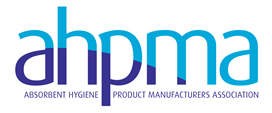Nappy Rash: The Facts
Dr Colin Michie MA FRCPCH FLS – Paediatric Consultant and Senior Lecturer
Nappy rash is the term used to describe irritation of the skin around the nappy area and is the most common skin disorder in infants. It is so-called because of the area in which it occurs. Most infants will have at least one episode of nappy rash in the first two years of their life and it is most commonly caused by one, or a combination of the following:
- Skin contact with enzymes and acids in urine and faeces
- Friction
- Candida albicans (thrush) infection, or other bacterial infection
- Dietary changes, for example moving on to solid foods, reaction to cow’s milk etc.
- Teething
- Being unwell and/or taking antibiotics
It is important to take care and protect the skin around an infant’s bottom.
If care isn’t taken, it can lead to dryness, scaling and redness. More prolonged periods of irritation and exposure to urine and faeces causes the skin to take on water, swell, and then progress to develop red sore areas and/or a rash in the nappy area. This is because faeces, in combination with urea from urine, will release ammonia, a gas that creates a strong alkaline solution that can greatly increase the chance of skin damage. Fortunately, the skin in this area has particularly rapid and effective systems for healing and recovery following damage, and with careful management nappy rash usually resolves within 2-4 days. If the rash doesn’t clear up within this time frame, advice should be sought from a doctor, nurse or health visitor in case medical treatment is needed
Prevention is the key to avoiding nappy rash.
Keeping the nappy area clean and dry is paramount along with exposure to air and/or the use of highly absorbent nappies which should be changed frequently, or as soon as they become wet or soiled. Water and light wiping should be used for cleaning and to remove irritants. When treating nappy rash, the use of barrier products (including creams containing components such as zinc oxide, petrolatum, and titanium salts) as per the product instructions, is routinely recommended to help the problem.
The term ‘chemical burn’ is often incorrectly used to describe nappy rash.
Whilst the effect of the uric acid and enzymes contained in urine and faeces on the skin could be considered a mild chemical reaction, ‘chemical burn’ is a highly misleading description of nappy rash. A chemical burn may be the result of an accident, misuse of products or assault, and incidents may happen anywhere such as in the home, school or workplace.
Chemical burns are medical emergencies which occur when the skin is exposed to a corrosive element such as an acid substance which should not come into contact with the skin. These may be contained in cleaning products or chemicals which are used in factories for example. Chemical burns and nappy rash are entirely different conditions and require different treatments.
Incidents of nappy rash have been dramatically reduced over the last thirty years.
The innovation of highly absorbent single use nappies has improved skin health and hygiene and has contributed to the reduction in nappy rash. Evolution in the engineering of ‘wicking’, the shaping of products to improve drainage of fluid and the development of new materials, all serve to reduce skin contact with the content of urine and faeces. Disposable nappies also help to maintain skin pH in the acidic range and ensure breathability which reduces skin damage from bacteria and Candida.
The absorbent materials in disposable nappies are widely used in many aspects of clinical care and their safety is thoroughly established. Their ability to help keep skin healthy is one of the main reasons for their success and widespread use.
